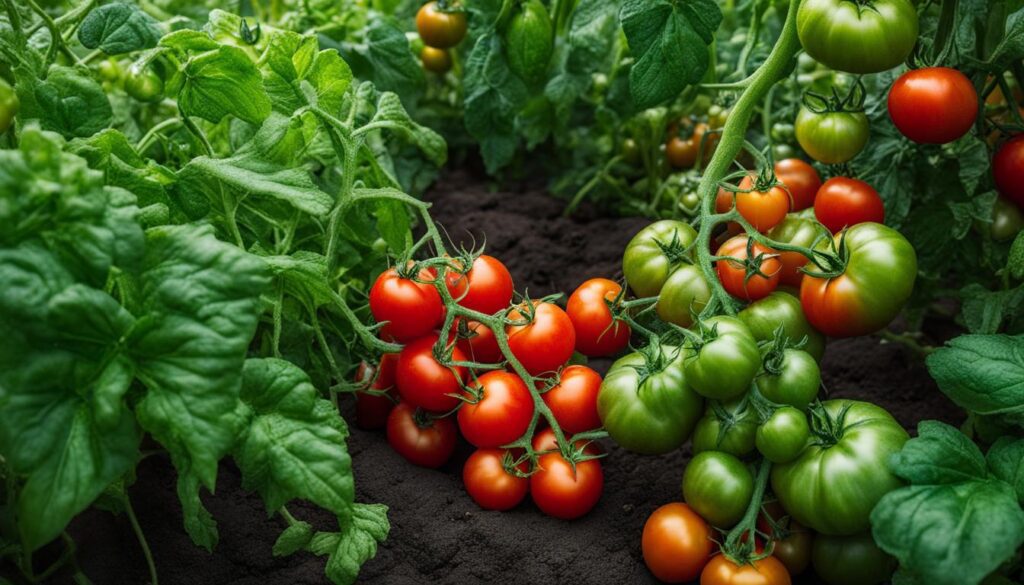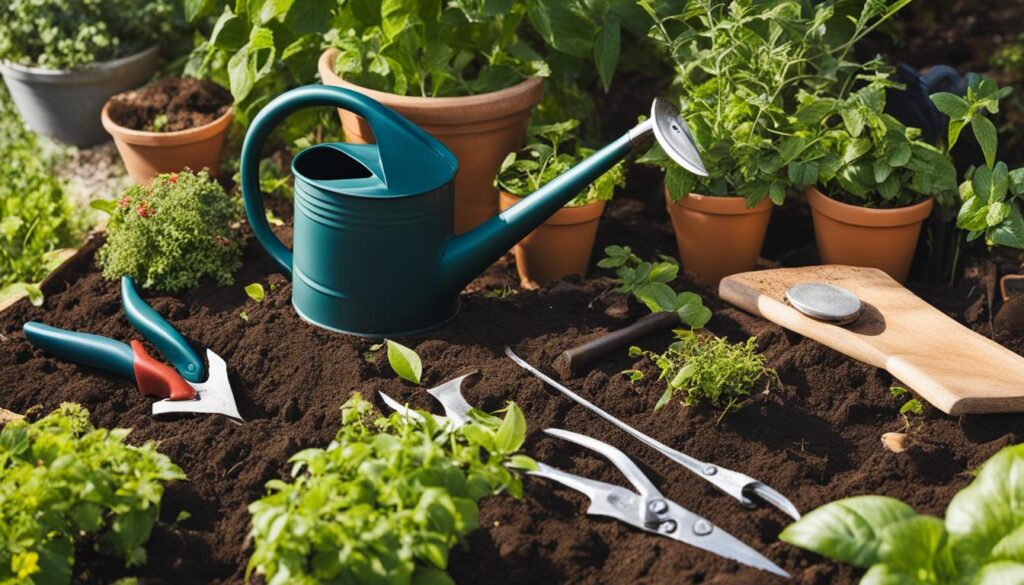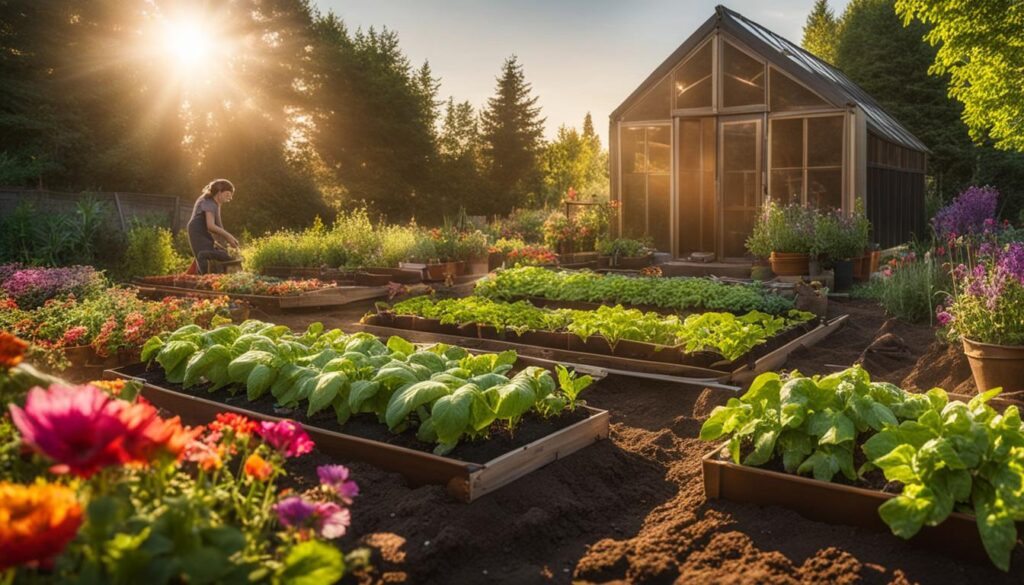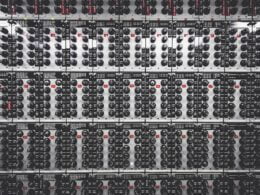Gardening has long been a popular pastime, but it’s not just a hobby. It can also be a way to save money and improve your grocery budget. By growing your own fruits and vegetables, you can enjoy fresh, organic produce without breaking the bank. Let’s explore how gardening can help you save money and provide you with a constant supply of nutritious food.
Gardening allows you to take control of what you eat, ensuring that you have access to high-quality, pesticide-free produce. This not only saves you money on expensive organic options at the grocery store but also allows you to enjoy the taste and nutrients of freshly harvested fruits and vegetables.
Whether you have a backyard plot or limited space for square foot gardening, there are options for everyone to get started. The National Garden Association provides valuable resources and tips for both novice and experienced gardeners.
While starting a garden does come with some initial costs, such as purchasing plants or seeds, nutrient-rich soil, and necessary tools, the long-term return on investment can be significant. By calculating the true cost of starting and maintaining a garden, you can make informed decisions and reap the financial benefits in the long run.
Post Summary
- Gardening can save you money on groceries by providing access to fresh produce.
- Growing your own fruits and vegetables allows you to control the quality and avoid the expense of organic options.
- The National Garden Association is a valuable resource for both new and experienced gardeners.
- Calculate the true cost of starting and maintaining a garden to make informed decisions.
- Long-term savings can be achieved by growing your own food and reducing your reliance on store-bought produce.
The Potential Return on Investment
Gardening has the potential to not only provide you with fresh, organic produce but also yield a positive return on investment. According to the National Gardening Association, gardening households can save money by growing their own fruits and vegetables. While there are risks involved, such as pests and unpredictable weather, the potential savings can be substantial. By growing your own organic tomatoes from heirloom tomato seeds, for example, you can enjoy a bountiful harvest while saving money.
| Store-bought Organic Tomatoes | Homegrown Organic Tomatoes |
|---|---|
| Costs around $2.99 per pound | Costs $3.99 for a package of heirloom tomato seeds |
| No control over the use of pesticides or other chemicals | You have full control over the growing process and can ensure organic practices |
| Reliant on large-scale growers for supply | Less reliance on external sources, reducing potential impacts of droughts or diseases |
| One-time use, requires repurchase | Seeds can be saved year after year, providing a continuous supply |
By investing in the initial cost of heirloom tomato seeds and dedicating time and effort to garden maintenance, you can potentially grow multiple tomato plants that produce 10-30 pounds of tomatoes. This translates to significant savings compared to buying store-bought tomatoes on a regular basis. Additionally, growing your own fruits and vegetables empowers you to make healthier choices while reducing your environmental impact. It’s a win-win situation for both your wallet and the planet.
Furthermore, by cultivating your own food, you become less dependent on large-scale growers and have more control over the quality and safety of the produce you consume. You eliminate the need to worry about harmful pesticides and chemicals that may be present in store-bought tomatoes. With homegrown organic tomatoes, you can enjoy peace of mind knowing that you are providing your family with nutritious, chemical-free food.
Additional Benefits of Homegrown Organic Tomatoes
In addition to the financial savings and health benefits, growing your own organic tomatoes from heirloom seeds offers a range of advantages. These include:
- A higher level of flavor and taste compared to store-bought tomatoes
- Greater variety with heirloom seeds, allowing you to choose from a wide range of colors, sizes, and flavors
- Potential for community sharing and bartering, fostering connections and goodwill among neighbors
- Satisfaction and pride in producing your own food and contributing to a sustainable lifestyle
Cost-Effective Gardening Tips
When it comes to stretching your dollars in the garden, there are several strategies you can employ to make gardening more affordable. Here are some cost-effective gardening tips to help you save money:
- Start early with seeds: Starting your plants from seeds rather than buying mature plants can save you a significant amount of money. Seeds are usually inexpensive, especially when compared to the cost of buying established plants. You can find a wide variety of seeds at your local garden center or online. Plus, starting plants from seeds allows you to have more control over the quality and health of your plants right from the beginning.
- Try square foot gardening: Square foot gardening is a highly efficient method for maximizing your garden’s productivity while minimizing the space required. By dividing your garden into square-foot sections and carefully planning the placement of each plant, you can grow a wide variety of vegetables and herbs in a small area. This method reduces the amount of water, fertilizer, and soil needed, making it a cost-effective option for those with limited space.
- Grow what you need and like to eat: One of the keys to saving money in the garden is to grow only what you and your family will actually consume. Planting vegetables and fruits that you enjoy eating ensures that you’ll make the most of your garden’s harvest. By focusing on the produce you truly need and eliminating waste, you can further maximize your savings.
By implementing these cost-effective gardening tips, you can not only save money but also enjoy the satisfaction of growing your own fresh and healthy produce.
Considerations for Garden Space
When planning your garden, one of the first decisions you’ll need to make is the type of garden space you want to create. There are two main options to consider: raised garden beds or a traditional garden plot. Each option has its own advantages and considerations to keep in mind.
Raised Garden Beds
Raised garden beds are an increasingly popular choice for many home gardeners. These beds are built above ground level and are typically enclosed by a frame, such as untreated cedar or concrete blocks. The benefits of raised garden beds include improved soil quality, better drainage, and easier maintenance and weed control. They are particularly beneficial if you have limited space or accessibility issues, as they can be constructed at a height that minimizes the need for bending or kneeling. When designing your raised garden bed, ensure the dimensions allow for easy access and provide sufficient soil depth for your chosen plants.
Traditional Garden Plot
A traditional garden plot involves cultivating the existing soil in your yard. This option requires tilling, preparing the soil, and creating rows or planting areas. Unlike raised garden beds, traditional plots do not have built-in defined boundaries and are typically at ground level. Consider the amount of space you have available and the level of effort required for soil preparation and maintenance. Traditional garden plots offer the flexibility to accommodate larger plants or crops that require more space, such as corn or pumpkins.
When deciding between raised garden beds and traditional garden plots, consider factors such as your available space, budget, and physical abilities. Both options can be successful for growing a variety of fruits and vegetables, so choose the one that best suits your needs and preferences.
| Consideration | Raised Garden Beds | Traditional Garden Plot |
|---|---|---|
| Space | Well-suited for small areas or limited space | Can accommodate larger plants and crops |
| Depth | Can be designed to provide sufficient soil depth | Depends on the quality and depth of existing soil |
| Accessibility | Easier access for planting, maintenance, and harvesting | May require more bending and kneeling |
| Materials | Can be built with untreated cedar or concrete blocks | No additional materials required |
Choosing the Right Seeds
When it comes to gardening, choosing the right seeds is essential for a successful and cost-effective experience. There are three main types of seeds to consider: heirloom seeds, open-pollinated seeds, and hybrid seeds. Each has its own advantages and considerations.
Heirloom seeds are seeds that have been passed down through generations and are typically true to their original form. These seeds are open-pollinated and can be saved and replanted each year, making them a sustainable choice for gardeners. By saving the seeds from your heirloom plants, you can continue the seed-saving tradition and reduce your seed costs in the long run.
Open-pollinated seeds, like heirloom seeds, can also be saved and replanted each year. However, they may not have the same history or cultural significance as heirloom seeds. Nevertheless, open-pollinated seeds are a good option for those looking for a cost-effective and sustainable approach to gardening.
On the other hand, hybrid seeds are a cross between two different varieties of plants. While hybrids can offer benefits such as disease resistance and improved yields, they do not produce stable offspring. This means that you will need to purchase new hybrid seeds each year, increasing your gardening expenses. Therefore, if saving money is a priority, it is best to avoid hybrid seeds and focus on heirloom or open-pollinated varieties.
By choosing the right seeds for your garden, you can save money, maintain a sustainable garden, and ensure a continuous supply of fresh produce. Consider the long-term savings and the ability to save seeds when deciding on the types of seeds to use. Whether you opt for heirloom or open-pollinated varieties, you’ll be taking a step towards a more cost-effective and self-sufficient gardening experience.
| Seed Type | Advantages | Considerations |
|---|---|---|
| Heirloom Seeds | – True to their original form – Can be saved and replanted each year – Sustainable and cost-effective |
– Limited availability and variety – May require specialized care |
| Open-Pollinated Seeds | – Can be saved and replanted each year – More variety and availability compared to heirloom seeds – Sustainable and cost-effective |
– Some plants may cross-pollinate – May require isolation to prevent cross-pollination |
| Hybrid Seeds | – Disease resistance – Improved yields – Some hybrids may have enhanced characteristics (e.g., flavor) |
– Not suitable for saving seeds – Need to purchase new seeds each year – Higher initial cost |
Time and Maintenance Commitment
Gardening requires careful planning, preparation, and regular maintenance to ensure a successful and bountiful garden. By dedicating time and effort to various gardening tasks, you can maximize the growth and productivity of your plants. Here are some key aspects of time and maintenance commitment to keep in mind:
Planning and Prepping:
- Before starting your garden, take the time to plan and prepare the necessary elements. Assess your available garden space and choose the most suitable option, whether it’s raised beds or a traditional plot. Consider factors such as budget, physical abilities, and the need for fencing to protect your garden from wildlife.
- Research and select the right seeds for your garden. Choose heirloom and open-pollinated varieties that can be saved and replanted each year, ensuring a continuous food source and saving money in the long run.
Maintenance and Weed Control:
- Fertilize your plants regularly to provide the necessary nutrients for healthy growth. Follow the instructions on the fertilizer packaging and adjust the frequency based on the specific needs of your plants.
- Keep an eye out for weeds and remove them promptly to prevent competition for resources and space. Regularly tending to your garden will help control weed growth and maintain the overall health of your plants.
Harvesting and Preserving:
- Monitor the progress of your plants and harvest the fruits and vegetables when they are ripe. This not only ensures the best flavor and nutritional value but also encourages further growth.
- Preserve the excess produce through various methods such as canning, freezing, or drying. This allows you to enjoy your garden’s bounty throughout the year and reduce waste.
By committing the necessary time to planning, prepping, maintaining, and preserving your garden, you can create a thriving and cost-effective gardening experience.
Advantages and Disadvantages of Gardening
Gardening offers numerous advantages that make it a worthwhile endeavor. One of the main benefits is the opportunity to know the quality of your food. By growing your own fruits and vegetables, you have control over the use of pesticides and fertilizers, ensuring that you have access to fresh and chemical-free produce. Moreover, gardening allows you to enjoy the full flavor and nutritional value of freshly harvested fruits and vegetables, enhancing the taste and satisfaction of your meals.
“Gardening allows you to enjoy the full flavor and nutritional value of freshly harvested fruits and vegetables.”
Another advantage of gardening is the potential to save money on your grocery expenses. Growing your own food can significantly reduce your reliance on store-bought produce, which can be expensive, especially for organic options. By investing the time and effort into cultivating your garden, you can enjoy a constant supply of fresh and nutritious food while cutting down on your grocery bill.
However, it is important to consider the potential disadvantages of gardening as well. One major drawback is the physical demands it can place on individuals, especially those with back or knee issues. Gardening often involves activities like digging, planting, and weeding, which can be strenuous and challenging for people with certain physical limitations. It is crucial to assess your own physical capabilities and make necessary adjustments to ensure a safe and manageable gardening experience.
| Advantages of Gardening | Disadvantages of Gardening |
|---|---|
| Control over food quality | Physical demands |
| Fresh and flavorful produce | Pests and diseases |
| Reduced grocery expenses | Unfavorable weather conditions |
| Sense of self-sufficiency |
Another potential disadvantage of gardening is the risk of pests, diseases, and unfavorable weather conditions that can impact the success of your garden. Pests like insects and rodents can damage or destroy your plants, requiring additional time and effort to combat and prevent infestations. Additionally, diseases and unfavorable weather, such as droughts or excessive rainfall, can negatively affect the growth and yield of your crops. It is important to be prepared for these challenges and take appropriate measures to protect your garden.
Despite these potential drawbacks, the advantages of gardening usually outweigh the disadvantages. By careful planning, maintenance, and proper precautions, you can mitigate many of the challenges associated with gardening. The physical demands can be managed through pacing and utilizing tools and techniques that reduce strain on your body. Similarly, pests and diseases can be controlled through regular monitoring, implementing organic pest control methods, and maintaining a healthy garden environment. With the right approach, gardening can be a rewarding and cost-effective way to enjoy fresh, homegrown produce.
Planting What You Eat
One of the key factors in maximizing the cost savings and efficiency of your garden is to plant the fruits and vegetables that your family consumes regularly. By focusing on planting what you eat, you can avoid wasting space, time, and resources on crops that aren’t utilized. For example, if your family loves green beans, make sure to plant plenty of them. Conversely, if beets are not a favorite, you can skip planting them altogether.
When you plant what you eat, you can ensure that you are getting the most value out of your garden. You can harvest fresh, homegrown produce that you and your family truly enjoy. This can help you save money by reducing your reliance on store-bought fruits and vegetables. Plus, growing your own food allows you to have greater control over the quality and freshness of what you consume.
If you find that you have more produce than you can consume, consider sharing the excess with your community, friends, or local organizations. This way, you can still enjoy the benefits of gardening while helping others who may appreciate fresh, homegrown produce. Community sharing is a great way to foster connections, contribute to food security, and make a positive impact in your neighborhood.
Example of Plants to Consider
| Plant | Benefits |
|---|---|
| Green Beans | High in fiber and protein, easy to grow, versatile in cooking |
| Tomatoes | Rich in antioxidants, great for salads, sauces, and canning |
| Lettuce | Provides fresh, crisp leaves for salads and sandwiches |
| Herbs (Basil, Mint, Rosemary) | Adds flavor to dishes, minimal space required, great for beginners |
| Strawberries | Delicious, sweet fruits perfect for fresh eating or desserts |
By focusing on planting what you eat, you can make the most of your garden and enjoy the benefits of homegrown food. Whether it’s fresh green beans, juicy tomatoes, or fragrant herbs, growing the produce that you love can be a rewarding and cost-effective endeavor. So, plan your garden accordingly, plant with purpose, and savor the joy of harvesting your own delicious crops.
Planning and Preparing for Your Garden
Before you start your garden, it’s essential to plan and prepare the necessary elements to ensure a successful and cost-effective endeavor. Consider the following aspects:
Garden Space
Assess the available space you have for your garden. Determine whether you’ll be using raised beds or traditional plots based on your needs, budget, and physical abilities. Raised beds are beneficial for small areas, providing easier maintenance and weed control. Traditional plots require tilling and preparation of the existing soil. Choose the option that best suits your circumstances.
Materials
When building raised beds, select suitable materials such as untreated cedar or concrete blocks. Ensure the dimensions are appropriate for easy access and sufficient soil depth. It’s important to use food-safe materials that promote healthy plant growth.
Fencing
Consider the need for fencing to protect your garden from wildlife. Depending on your location, you may need to keep out rabbits, deer, or other animals that could damage your crops. Install a sturdy fence that provides adequate protection while maintaining easy access for tending to your plants.
Seed Selection
Choose the right seeds for your garden. Favor heirloom and open-pollinated varieties, as they can be saved and replanted each year, leading to long-term savings and sustainability. Consider the types of vegetables and fruits that thrive in your climate and the preferences of your family.
Time Commitment
Evaluate the time commitment you can dedicate to gardening. Consider the planning, prepping, maintenance, and harvesting tasks required throughout the growing season. Determine the size and complexity of your garden based on the time you have available and adjust accordingly.
By carefully planning and preparing for your garden, you can ensure that you make the most of your garden space, choose the right materials, protect your crops with fencing, select suitable seeds, and manage your time effectively. These steps will set you up for a successful and cost-effective gardening experience.
Conclusion
Gardening has the potential to save money by providing a constant supply of fresh produce and reducing grocery expenses. However, for gardening to be cost-effective, it is essential to plant what you will eat and enjoy.
Careful planning and preparation, along with proper maintenance and preservation, contribute to the success and financial benefits of a home garden. By focusing on sustainable practices, using heirloom seeds, and maximizing the use of space, you can create a garden that not only saves money but also enhances your self-sufficiency and enjoyment of homegrown food.
Start small, learn as you go, and enjoy the rewards of gardening.
Can Having Indoor House Plants Help Save Money on Gardening Costs?
Having indoor house plants can definitely help save money on gardening costs. The benefits of house plants include improving air quality, reducing stress, and adding a touch of nature to the indoor environment. By having these plants indoors, you can potentially save on outdoor gardening expenses.
FAQ
Will gardening save me money?
Yes, gardening can be a cost-effective way to save money by providing fresh produce and potentially reducing your grocery expenses.
What is the potential return on investment for gardening?
According to the National Gardening Association, the average gardening household experiences a positive return on investment. For example, a package of organic, heirloom tomato seeds can yield multiple tomato plants that produce 10-30 pounds of tomatoes, providing significant savings compared to store-bought tomatoes.
How can I make gardening more cost-effective?
You can stretch your gardening budget by starting early with seeds, trying square foot gardening for efficient use of space, and only growing what you need and enjoy eating. Avoid planting vegetables and fruits that your family doesn’t consume regularly to avoid wasted produce.
Should I use raised garden beds or traditional garden plots?
The choice depends on your available space, budget, and physical abilities. Raised beds are beneficial for small areas and provide better soil quality and drainage. Traditional garden plots require tilling and preparation of existing soil.
What types of seeds should I use for my garden?
Heirloom and open-pollinated seeds are the best choices as they can be saved and replanted each year, guaranteeing a continuous food source. Hybrid seeds need to be purchased annually.
How much time and maintenance does gardening require?
The time commitment for gardening tasks such as fertilizing, weeding, and plant care typically ranges from 1-2 hours per week during the growing season. Harvesting and preserving the produce also require additional time and effort.
What are the advantages and disadvantages of gardening?
Gardening offers advantages such as knowing the quality of your food, enjoying fresh produce, and reduced grocery expenses. However, there are potential disadvantages such as physical demands and challenges from pests, diseases, and unfavorable weather conditions.
Should I plant only the fruits and vegetables that my family consumes regularly?
Yes, it is recommended to focus on planting the fruits and vegetables that your family enjoys. Avoid wasting space and resources on crops that aren’t consumed regularly.
What should I consider when planning and preparing for my garden?
Assess your available garden space, choose between raised beds or traditional plots, select suitable materials, consider the need for fencing, and choose the right seeds based on your needs and preferences. Also, evaluate the time commitment you can dedicate to gardening.













